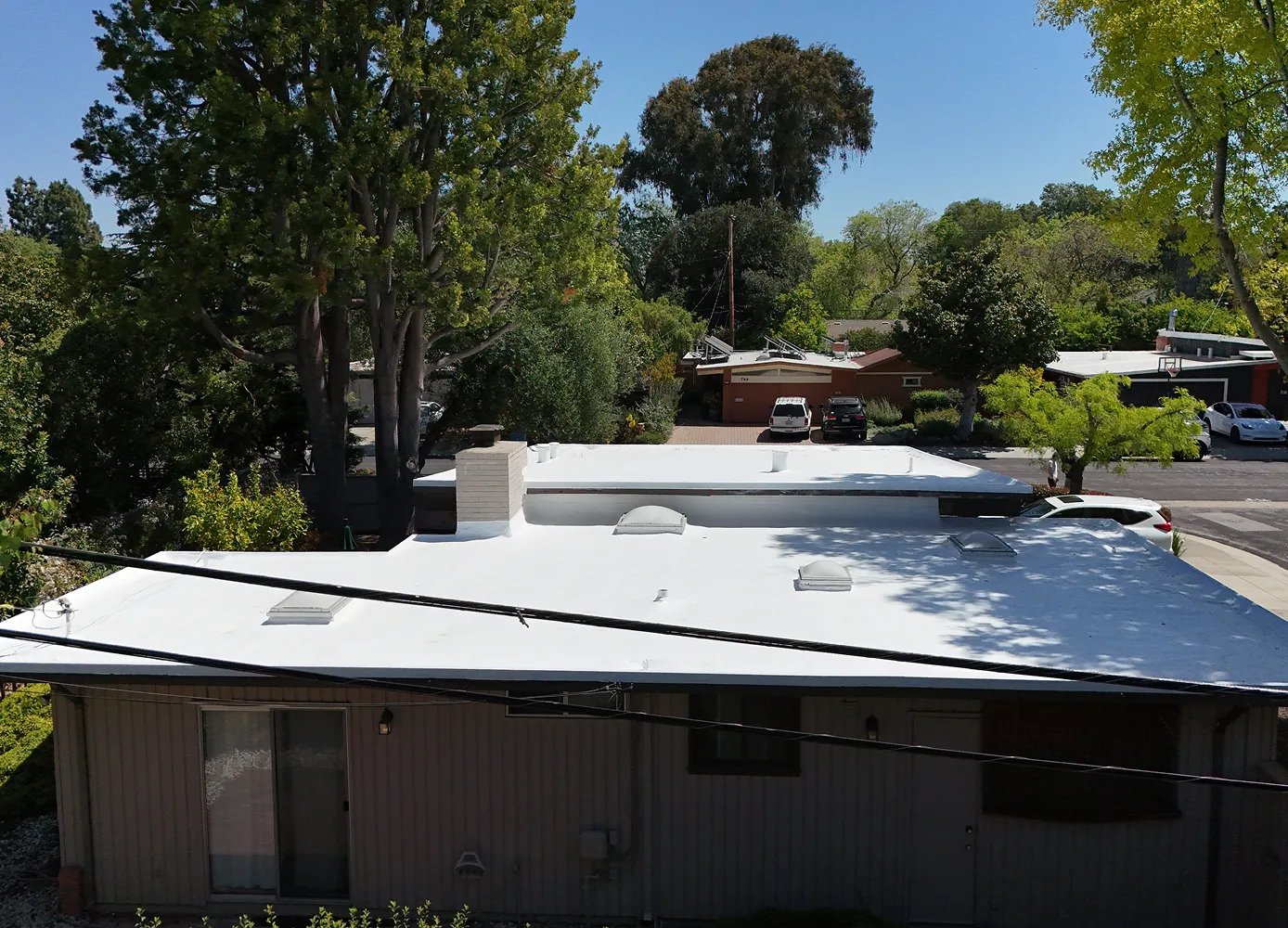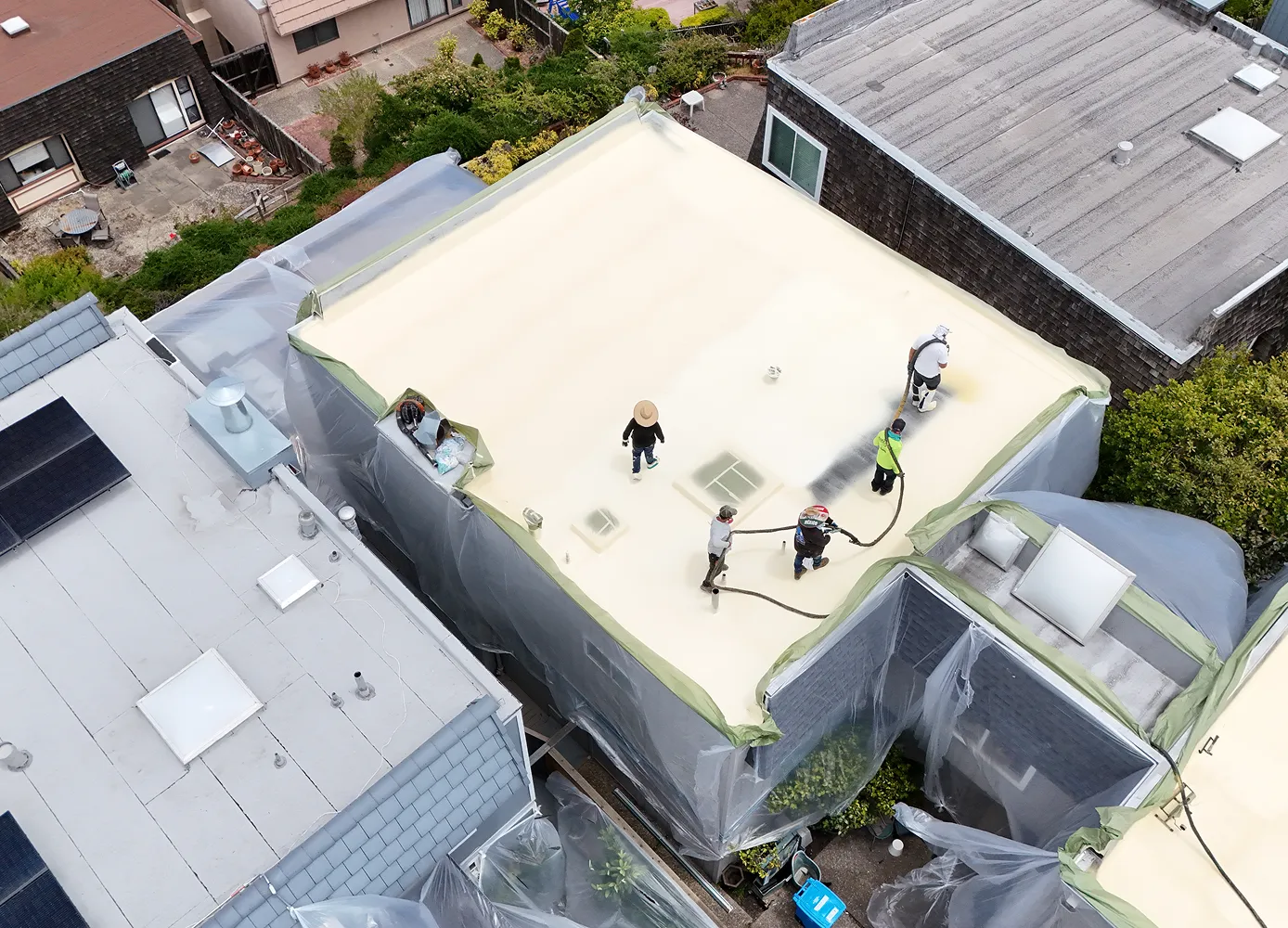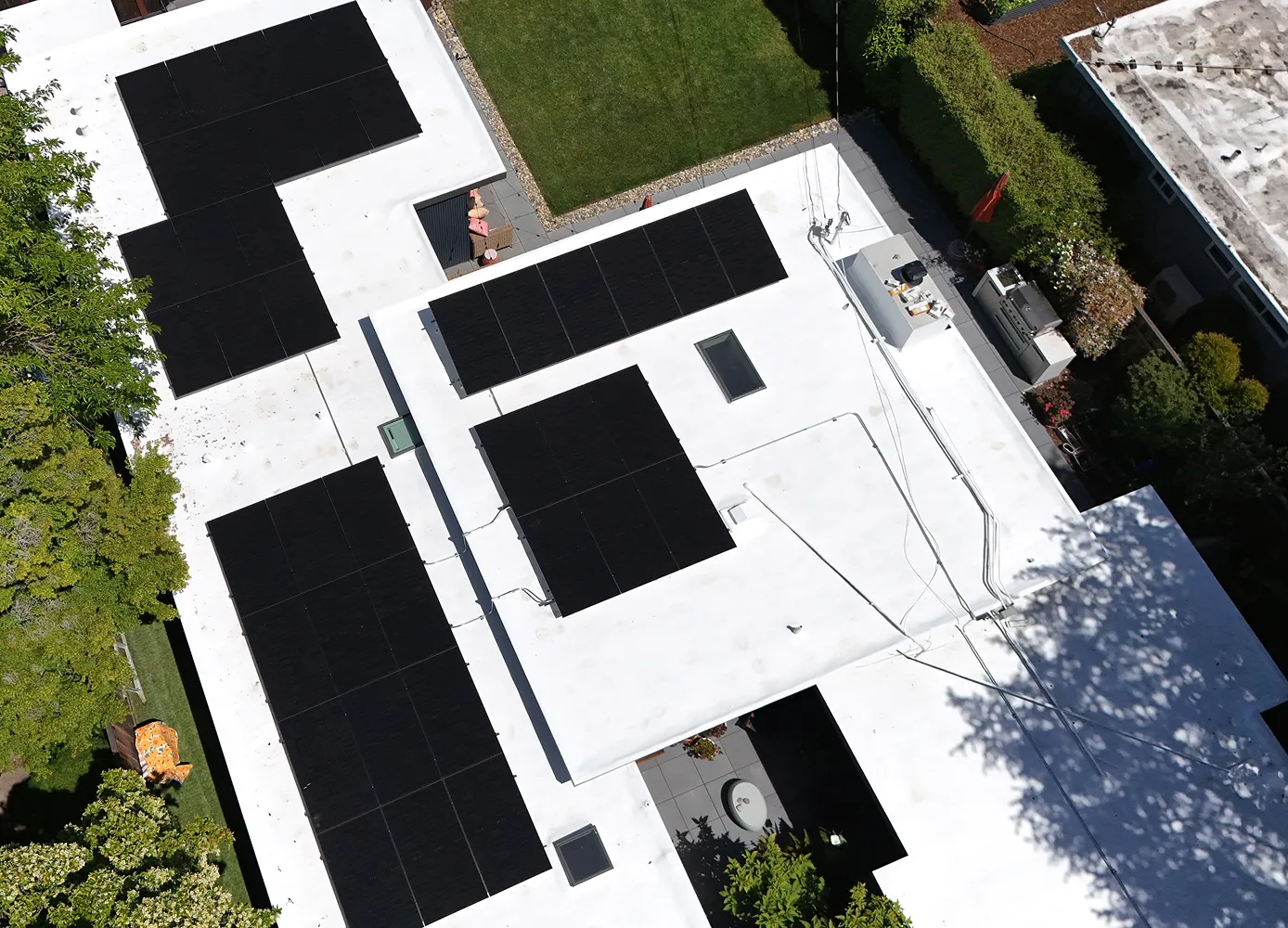⭐️⭐️⭐️⭐️⭐️
20,000+ Satisfied Customers & Over 30 years of Service
Trustindex verifies that the original source of the review is Google. We installed a solar system with batteries with Dura-Foam last year. The system is working fabulously – it went through a winter with several power outages, and we usually don’t even know we have an outage until PG&E informs us. What a relief. Dura-Foam’s owner Trevor Hill was responsive, open to new ideas & willing to work with new partners. We integrated a battery system from FranklinWH as well as a SPAN sub panel to maximize the use of the solar power we are producing. Dura-Foam worked with the FranklinWH rep Trevor Gould to design and install a robust system that is transparent, efficient and most of the time completely self-reliant. One glance now tells me how much I produce, what I use, and what I use it for. Franklin’s aGate & SPAN were just the combination for someone like me who really likes data. Trevor Hill was patient and willing to answer any questions during the installation, the plan set was comprehensive, the work his team did was excellent, and they met the occasional construction challenge with the willingness and expertise to make it right. Cooperation with FranklinWH was clearly excellent. And finally, Trevor Hill even put together a full package of cohesive documentation for the CPA to document everything for the tax credit. 5 stars all around for the entire team and the products that make up our wonderful system.Trustindex verifies that the original source of the review is Google. I had contacted Durafoam and talked to Trevor about some minor roof work earlier this year. He was very responsive and got that done quickly. We eventually had them resurface our 20+ year old foam roof in summer and they were able to fit us on short notice. Always cheerful, Ali was a pleasure to work with. He and his crew were hardworking, as well as meticulous, and took time to protect the fruit and vegetable plantings in my backyard. Anthony, who's in charge of ops, was here a couple times and helped us resolve some logistical issue on the project. We are very happy with the quality of the roof work. Ali's team was able to accommodate our schedule and completed the job just as house guests AND a heat wave were expected at the same time! Thanks to our newly resurfaced roof, our home, which has no AC, weathered several extended heat waves of 90-100+ F this summer comfortably. While foam roofs are not cheap, they sure make severely weather more bearable! I totally recommend Durafoam to anyone looking for a great foam roof contractor!Trustindex verifies that the original source of the review is Google. They know what they are doing. Would recommend to friends and Family.Trustindex verifies that the original source of the review is Google. We recently needed a roof inspection on short notice for insurance purposes. Trevor from Dura Foam followed up quickly to our call. He helped us out, and gave us the documentation we needed to avoid a bad situation. We really appreciate their great response and workmanship!Trustindex verifies that the original source of the review is Google. Dura-Foam Roofing & Solar Center were really easy to work with! I would definitely recommend them to anyone with roofing issues. They responded to my inquiry and were able to get someone out to look at our roof quickly. I'll definitely reach out again in the future if we have any other issues that come up!Trustindex verifies that the original source of the review is Google. Dura-Foam Roofing & Solar Center did a fantastic job repairing our foam roof after it was damaged by an enormous fallen tree. Lusio, David, and Emiliano each performed different parts of the complicated job. They were all very professional and cordial. The work was performed efficiently, neatly and on schedule. And Isaac, the office staff person who coordinated our job, was a pleasure to work with. We couldn't have been happier. I highly recommend this company!Trustindex verifies that the original source of the review is Google. A Bay Area treasure. Look at the pictures and you will see the people that you will be working with. They pose like a family and that is exactly how it feels to work with them. 9 years and 6 months after my roof and solar project was installed, I had an issue with my solar generation. I called Dura-Foam and was surprised that they remembered me, my home and the installation. Anthony and Lusio came out and quickly identified the issue. Hard working and professional, they took the time to double-check everything and allay my concerns. They stand behind their work and did not charge me for the service call even though it has almost been 10 years since the install. If you have a roof (especially an Eichler) you need to give these folks a call. Honest, courteous and professional Dura-Foam is the right call for roofing and solar.Trustindex verifies that the original source of the review is Google. We were very satisfied with the service. We found the workers were very cordial and we appreciate it!
According to the polyurethane foam association over 1.8 billion pounds of flexible polyurethane foam (FPF) products are produced annually in North America. There are many different types of foam out there; they are all based on altered forms of plastic filled with micro bubbles.
Some examples of FPF products are: polystyrene foam, polyethylene foam, styrofoam, and polyurethane foam. Polystyrene foam (often blue) is used in rafts, life preservers, and insulation wraps for residential homes. Polyethylene foam is used in cushions, pillows, and beds. Styrofoam is usually white, and typical uses are white foam for coolers, mugs, or cups (e.g. coffee/ or hot chocolate). Finally, polyurethane foam is a yellow type of foam for roofing, insulation, refrigeration warehouses, foam boards. Foam roofing is one of the most common polyurethane foam applications.
There are probably as many myths as there are types of foam. Some of these misconceptions may be partly due to the fact that there are so many different kinds of foam. With about three decades of foam roofing experience we have heard some myths so absurd we wont bother listing them here. This article is an attempt to dispel some of the most typical myths and rumors about foam roofing. Without further adieu, here are ten of the most common polyurethane spray foam roofing myths, listed in no particular order.
Picture: A Sprayed Polyurethane Foam roof (SPF) installation on a warehouse. SPF foam roofing is plagued by myths and misconceptions .
Although the groundwork for polyurethane foam was done by Otto Bayer and his team in 1937, polyurethane foam would not become available until much later. In 1952 polyisocyanates became commercially and commercial production of polyurethane foam began in 1954 based on toluene diisocyanate (TDI) and polyester polyols. Commercial production of flexible polyurethane foam began in 1954, based on toluene diisocyanate (TDI) and polyester polyols. The invention of these foams (initially called imitation Swiss cheese by the inventors) was thanks to water accidentally introduced in the reaction mix. These materials were also used to produce rigid foams, gum rubber, and elastomers.
Dr. Otto Bayer began working with polyurethanes in 1937. However, it was not until further innovations, and Walter Baughman’s discovery of the Blendometer in 1953 that mass production of polyurethane foam began. As a product, polyurethane foam is over half a century old.
Initially polyurethane spray foam was used in the 1960s for refrigeration and industrial insulation projects, although by the late 60s and early 70s polyurethane foam had evolved into exterior roofing applications. The earliest foam roofs are now around 50 years old. So, as a product, polyurethane foam has existed for the better part of a century, and it has been in use on roofing in applications for about half a century. For most of the living world, foam roofing is indeed not new.
This is very much a myth, and if you believe it, you should be ashamed. Now, keep in mind that If you have a sadly deteriorating foam roof, with large patches of exposed foam (where the acrylic coating has worn away), then birds may peck at your deteriorating and exposed foam.
One popular foam roofing myth involves birds pecking a foam roof into oblivion.
However, it’s very easy to stop the birds from doing this (i.e. the “can’t stop” part is a myth). Simply replace the coating with a fresh layer or use some acrylic caulking to seal up the exposed area. When an added layer of rubberized coating covers the foam, surface toughness increases such that birds tend to stop pecking as they find that their beaks bounce-off the roof surface. Keep in mind that this type of work is best performed by qualified technicians who understand surface preparation procedures and have access to suitable materials. If you do find a bird pecking at your foam roof, think of it as a compliment. Even a bird’s brain is smart enough to realize that foam is both lightweight and has great insulating qualities (e.g. for a nest).
You CAN walk on a foam roof without having the skills of those ninjas that walk on rice paper; just leave your spiked heels and cowboy boots in the closet–its best to use soft rubber sole sneakers. Unless you’re walking on a condemned (or soon to be) building, a foam roof is completely capable of sustaining the weight of a normal person.
Employees walk on an SPF foam roof while making an inspection.
Soft sole shoes are advised because an extremely sharp object can damage or penetrate the foam. Since spray foam roofing structure is composed of millions of tiny closed cells, only a hole in the roof that penetrates to the underlying substrate can potentially cause a leak. However, foam can only last forever if it is protected from UV rays (sunlight). If your foam roof has a hole or is damaged, a proper type of coating or caulking should be used to coat the roof again and protect it from UV rays.
Sure, and monopoly money is accepted by your local bank. On a more serious note, memory foam mattresses are very low density and open cell, while foam roofing foam is still flexible, it is relatively much higher density and composed of closed cells. Polyurethane closed cell foam used in roofing applications is a completely different material composition vs memory foam. Polyurethane foam used for roofing applications is exponentially stronger and more durable than the type of foam used in a mattress. For example, Dura-Foam has many roofs approaching the 35 year mark which are still in near perfect condition.
A foam roof actually costs about the same as a typical BUR or single ply roof. Also, consider that BUR or Asphalt roofs are actually an oil based product. Rising oil prices are driving up the costs of most typical flat roof alternatives, while the cost of foam roofing has remained more constant. An additional benefit to consider, is that a foam roof is the last roof you’ll ever need to buy. Furthermore, a foam roof provides exceptional insulation, and we always use reflective cool roof coatings (on completed foam projects) which results in even further reduced energy costs. Cool roof coatings alone can cut down cooling costs by 30 percent or more in warmer climes.
If you’re only considering a 5 or 10 year window, a foam roof may or may not be more expensive than a traditional roofing material. However, when you start considering 15, 20 or more years in your evaluation, the foam roof becomes much more cost effective than other alternatives. You wont need to replace the foam roof in 20 years–you can simply maintain a foam roof by periodically adding re-coats to protect the roof from prolonged UV exposure. This is not a viable option with a traditional roofing installation.
When you think about ‘tough’ materials, foam products probably don’t come to mind. However, Dura-foam has built many 30 year old (and counting) foam roofs which remain in great condition. Many of the earliest foam roofs are still standing (50 years and counting). Foam roofing has already stood the test of time, and its a fact; a foam roof can last the life of your building.
Not really–whether you DIY (Do-it-Yourself) or have a contractor install a foam board roof, you’ll only see a fraction of the benefits possible with sprayed foam roofing. Sprayed foam roofing is manufactured on site, and is sprayed to perfectly conform to your roof as a single monolithic barrier to the elements. A foam board roof is full of seams which allow moisture and vapor transmission, which greatly reduces the insulation capacity.
Although the R-value rating of a foam board roof appears to be on par with a foam roof, the actual performance of such roofs is substantially inferior. In other words, in this case, the R-value of the insulation does not factor air-infiltration with thermal resistance which makes it an inaccurate comparison. One should also consider a sprayed foam roof also seals a roof better (prevents leaks) better than any traditional pre-manufactured material (even foam boards).
Here’s just one more myth to add to our list. Polyurethane foam is really just a form of altered plastic with millions of tiny trapped air bubbles. Although the formulation is designed for roofing applications and optimized for the best combination of thermal resistance and durability, the base material is the same thing used in most refrigerators or foam mattresses. Polyurethane foam materials are completely inert, and are just as safe as the foam pillows you probably have on your couch by your TV or in the seat cushions inside your car.
We have looked at the most recent Soybean oil based foams, and they presently contain a maximum of about 15% soybean oil. Considering the expense, and the risk that these formulations wont stand the test of time (last the life of your building), we are not completely sold on this product.
Perhaps one day, Soybean oil based foams will be substantially different from traditional foam. For now, its 85% exactly the same as your every-day polyurethane foam, and for us, it’s not enough to justify the added expense. Although we will look for new developments in bio-based foams in the future, our present conclusion is that soy (and other bio-based) foams are just a gimmick. Once technology changes and the second generation of soy based (and other bio-based) foams are released, we will re-visit the subject.
If foam on a roof system is found to soak up water, either the wrong material was used or the material components were not applied using the proper equipment and expertise. The Spray Polyurethane Foam (SPF) used in roofing applications is “closed cell”. In other words, it is a plastic with millions of tiny closed cells which are impenetrable by water. A block of SPF submerged under water will remain buoyant and dry indefinitely. For this reason, spray polyurethane foam is used in flotation docks and the hulls of sea vessels. In roofing applications, closed-cell SPF is manufactured at the job site using specialized equipment. Foam that soaks-up water is not classified as “closed cell” SPF.
During the last few decades foam roofing has grown in popularity and become the flat and low slope roofing material of choice for environmentally conscious consumers. Unfortunately, there are some obstacles for foam roofing contractors due to large amounts of misinformation that have propagated through society. There are many foam roofing myths; the ones we have listed here are just some of the most common ones. Foam roofing is truly a highly quality, high performance product. Hopefully this article will help at least a few people separate fact from fiction in reference to foam roofing.
These examples highlight why foam roofing is not just an alternative but the preferred solution for businesses looking for unmatched durability, energy efficiency, and cost savings.



Trusted roofing and solar solutions built for strength, efficiency, and long-term protection tailored to your home’s needs.
Get important tips on keeping your roof efficient and safe in the Bay Area!
© 2025 All Rights Reserved Dura-Foam